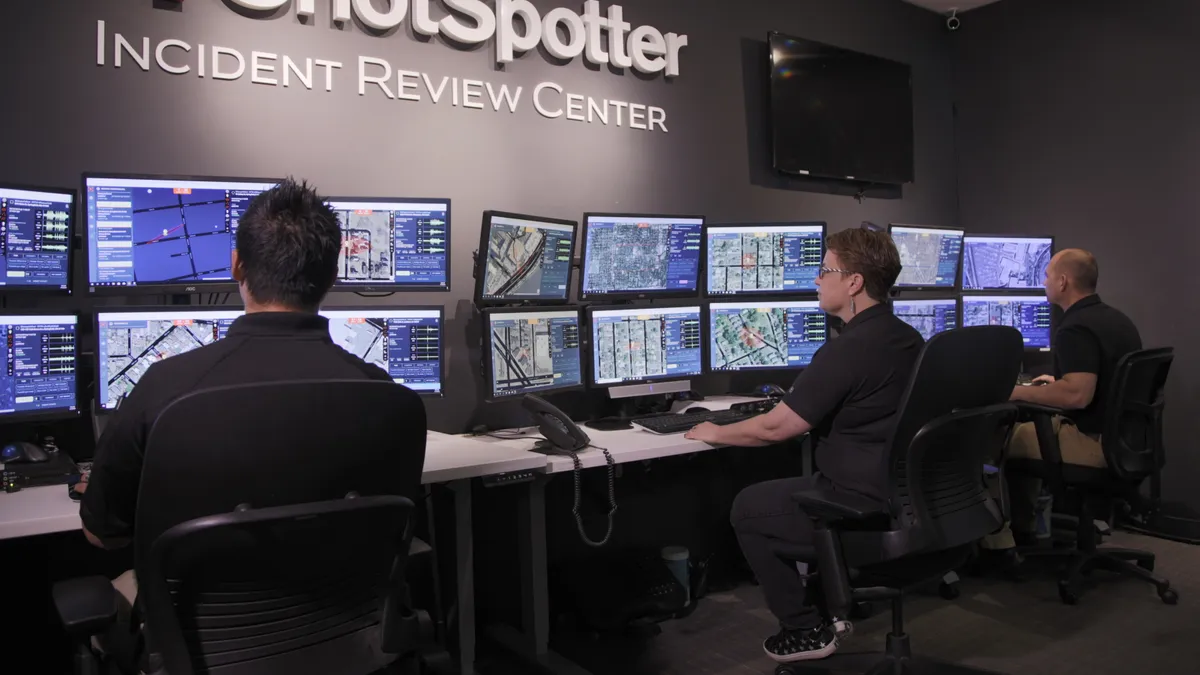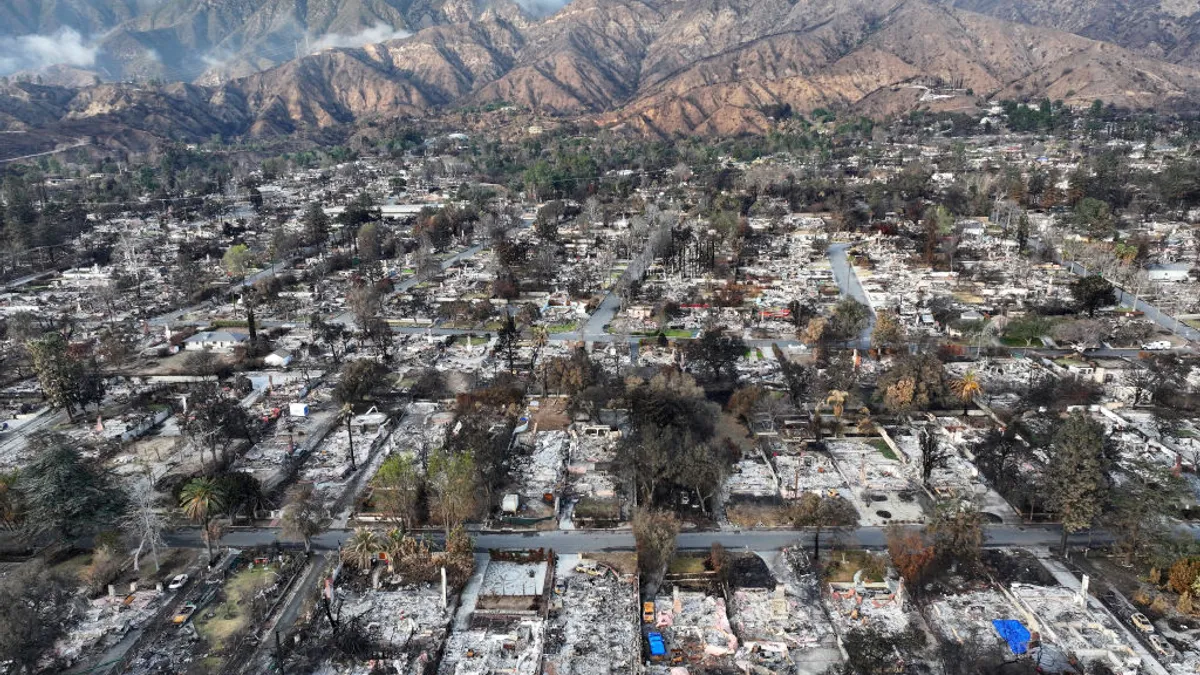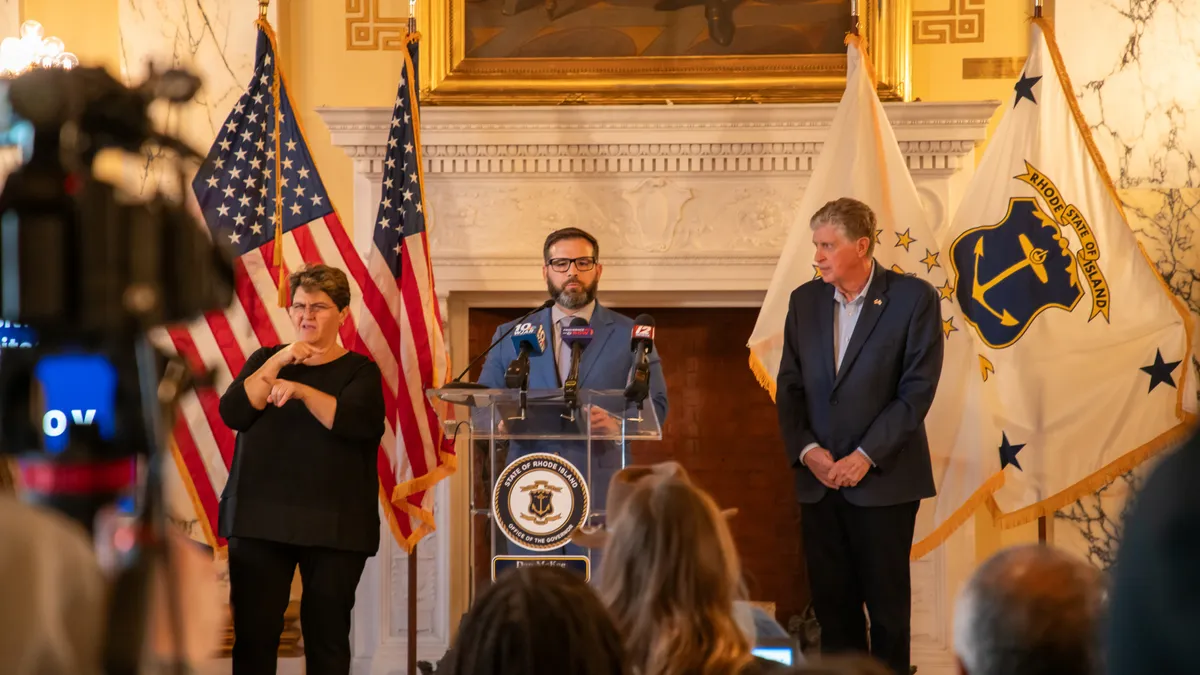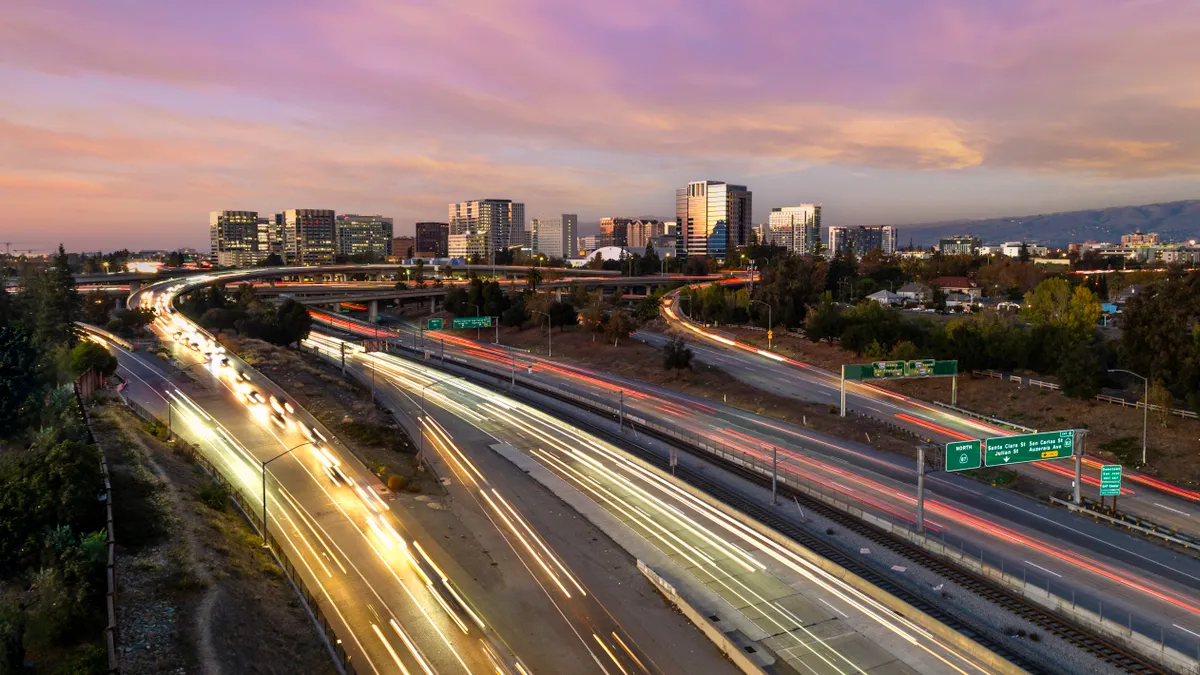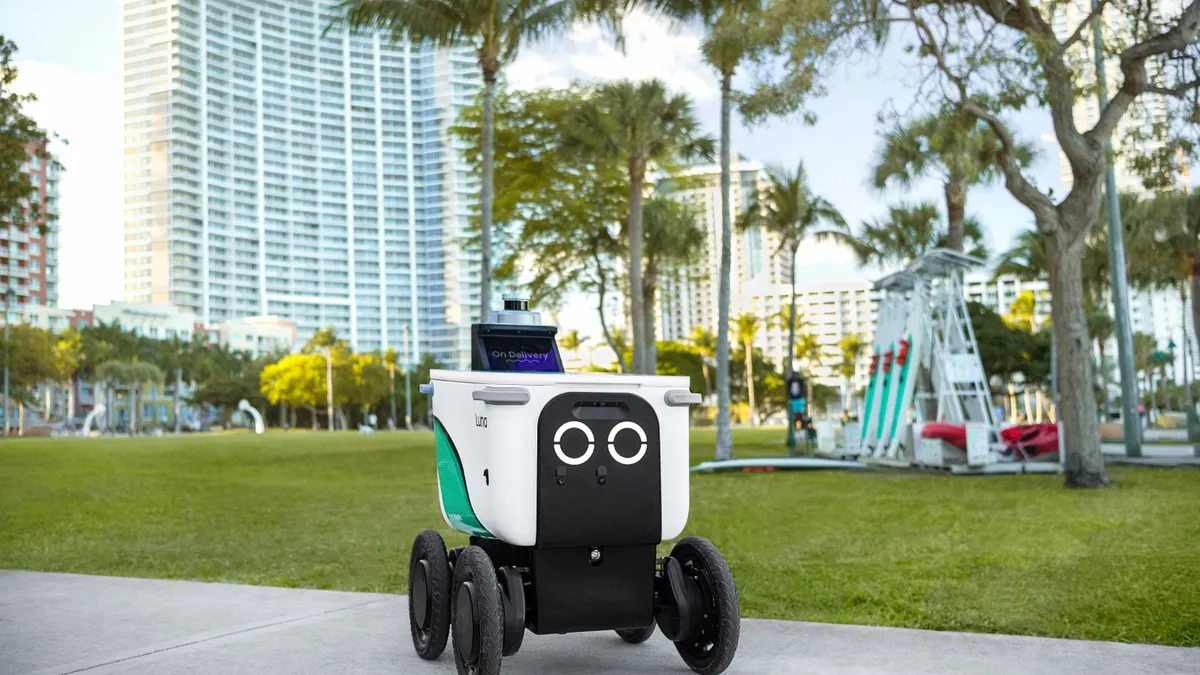Editor's Note: The following is an rewritten excerpt from Episode 3 of City Surveillance Watch, a limited podcast series from Smart Cities Dive. Learn more with the audio below, beginning at 19:45.
The Oakland, CA Police Department (OPD) will present a report later this year to the city's privacy commission regarding its contract with surveillance tech firm ShotSpotter. The city is one of a few jurisdictions in the country that conducts annual reviews of surveillance technologies.
"The ShotSpotter contract, they own the data," said Brian Hofer, chairman of the Oakland Privacy Commission and executive director of Secure justice. "That’s something we’re going to push on when the contract comes back up for renewal."
ShotSpotter, deployed in more than 100 U.S. cities, makes sensors and cloud-based subscription software that detects the sound of gunfire. The company locates where shots are heard, then it alerts law enforcement agencies and security personnel in real-time. And, as mentioned by Hofer, ShotSpotter owns the gunshot data gathered by its sensors on the city’s streets.
Data generated by the system includes precise lat-long locations and corresponding addresses where shots are detected, along with information like the number of rounds fired and type of gunfire.
This can be some very revealing information. Over time it can show patterns of gunfire near a particular home address or in a specific neighborhood; on what days of the week or times it tends to happen; and whether or not police responded to the incident.
"This information is key to better protecting officers by providing them with increased tactical awareness. It also enables law enforcement agencies to better connect with their communities and bolsters their mission to protect and serve,” the company stated in its 2018 marketing materials.
ShotSpotter declined to make anyone available for an interview with Smart Cities Dive for the City Surveillance Watch podcast.
Like with many tech firms, monetizing data is at the heart of ShotSpotter’s growth plans. ShotSpotter CEO Ralph Clark said as much during the firm’s third quarter 2020 earnings conference call.
“I would say that all our franchise is really about taking data and translating that data into actionable processes," said Clark during the call. "Even in the face of a pandemic and defund the police, etc. The police departments really do rely on us and trust us. So, we’re in a great pole position we believe to bring kind of new capabilities to bear."
Sometimes cities don’t recognize the value of data they’re handing over to tech vendors, says Deirdre Mulligan, professor at the school of information at UC Berkeley.
"What’ll happen is a new infrastructure will be put in place in the city, and all the city will end up getting back is reports," Mulligan said. "They actually don’t get the data about movement patterns in their own city or something, and so in some ways they end up becoming hostage to companies that now know more about the urban infrastructure than the city may because they have the raw data, or the data, and the city is just left with a set of reports."
ShotSpotter clients pay per square mile covered by its sensors. Company spokespeople told City Surveillance Watch the company does not disclose its fees, but Clark mentioned during that earnings call that the company recently raised prices, in some cases from $65,000 to $70,000 per square mile per year.
The tech's 'unproven' efficacy
Hofer said he recognizes some benefits of ShotSpotter, such as getting police to crime scenes, identifying witnesses or rushing people to the hospital faster — but he isn’t so sure it’s worth the money.
"It is still totally unproven as to the efficacy, and ShotSpotter is not cheap. We spend millions of dollars in Oakland, which is a lot of money in Oakland for this technology," said Hofer.
Still, because Oakland’s surveillance ordinance calls for annual reviews of technologies like ShotSpotter, the city actually has an opportunity when the review comes up later this year to evaluate the data ownership agreement, as well as the system’s cost-effectiveness.
"The annual report says you’ve got to justify this continued use,” said Hofer. “To me that’s the real issue, is, does this technology work? We’re going to have to start saying no at some point to this technology that’s just not worth the money.”
Tony Jones, captain of the OPD’s ceasefire division, told City Surveillance Watch the department will include some measurement data about ShotSpotter in its upcoming report to the privacy commission. He pointed to an example in which he says officers responded to 96 shooting victims despite the fact there were no 911 calls made related to those incidents.
"The fact that police can get to people and get them help – almost a hundred people – when no one even knew that they had been shot, except the person that did it obviously, that’s the strongest data point going that justifies why we need something like that," Jones said.
Jones said sometimes the impact of the technology is tough to gauge. Say, for instance, ShotSpotter data shows that gunfire just occurred in an area known for conflict among specific groups. In the past, that sort of information has prompted the department to deploy officers to strongholds of rival groups in the hopes of preventing retaliatory attacks. It’s not exactly something easily quantified.
Or sometimes the technology has been used in place of traditional police interactions that have been considered discriminatory.
“If we have technologies that can take us right to where these gunshots occurred at, then our cops don’t have to drive up to a corner full of teenagers, who in many instances will be minority teenagers because the gunfire is concentrated in those areas, and asking them, 'Hey, have you heard any shots?," Jones said. "And those kind of contacts can lead to things we just don’t want, right?"
"They can be viewed as accusatory. It’s not - we view them as negative contacts, and so to avoid any potential profiling, or officers are just stopping people because they’re standing, you know, a hundred yards away from where some shots could have been, it takes the guess work out of locating these scenes where gunfire is being found."
Hungry for more? Listen to al of City Surveillance Watch today on Apple Podcasts, Spotify, Stitcher or wherever you listen to podcasts.


